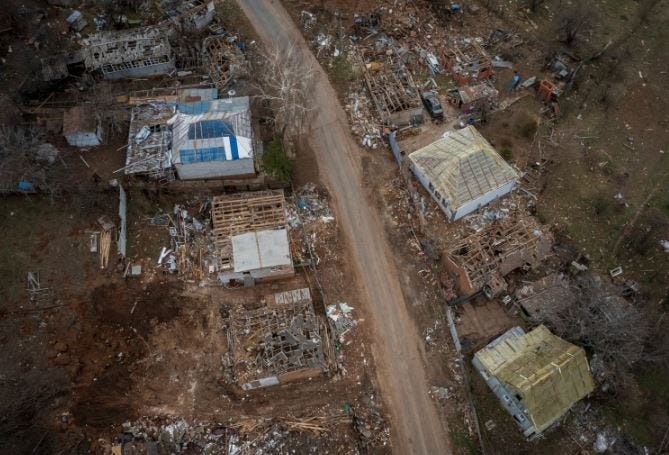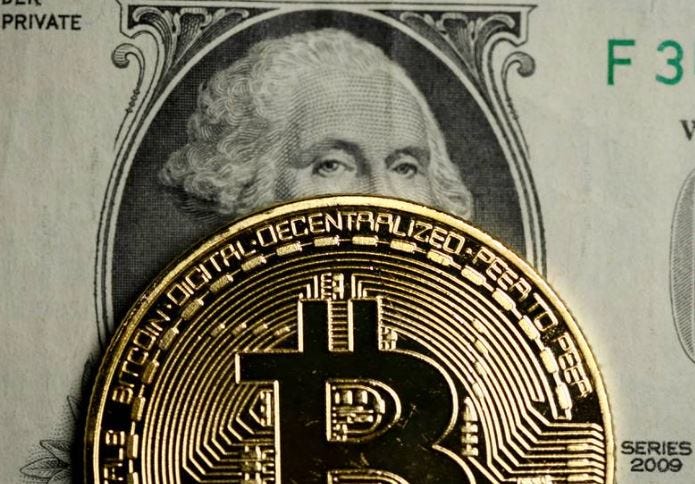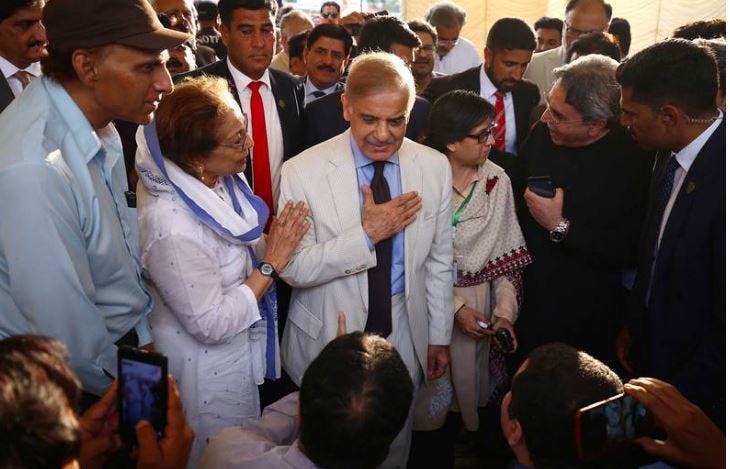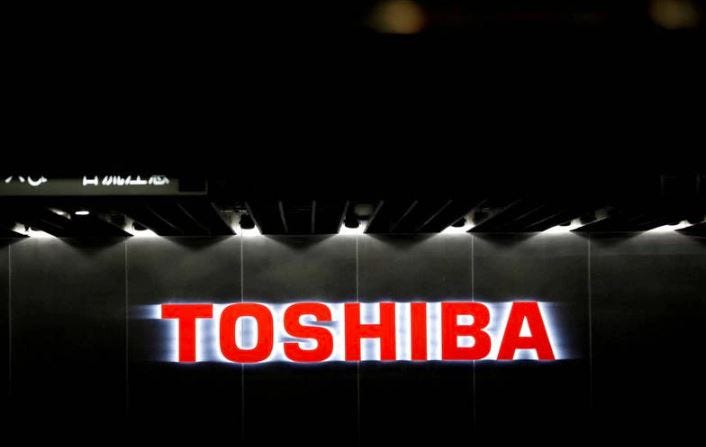De cara al mundo hace un repaso semanal de la actualidad internacional. Javier Fernández Arribas analiza los principales sucesos en el panorama internacional con entrevistas a expertos y un panel completo de analistas. Las claves del mundo en tus manos.
Tuesday, 26 April 2022
Monday, 25 April 2022
Princess Haya was caught red-handed in the bedroom with her British bodyguard
In May, Princess Haya Bint Al Hussein was caught red-handed by Prime Minister of UAE Sheikh Mohammed bin Rashid Al Maktoum when he suddenly visited their London home and found Princess Haya and her lover-cum-bodyguard. The Dubai ruler also found strips of used condoms beside Haya’s bed as well as two glasses, proving the romantic couple were having sex in the bedroom while their children were in the next room.
Sheikh Mohammed bin Rashid Al Maktoum was already
suspecting his wife Princess Haya had inappropriate relations and the suspicion
was proved as the couple were found to having sex. The Dubai ruler unexpectedly
returned to London from attending a joint wedding of three sons in Dubai in May.
According to sources, he was shocked seeing the 45-year-old Princess Haya
with the bodyguard at the lavish residence and demanded her immediate return to
Dubai with him. But the Princess refused and abruptly left the house with her
two children and flew to Germany.
The Dubai ruler and members of the royal family already were worried at the
odd intimacy between Princess Haya and the former army officer who provided
security. This bodyguard was accompanying Princess Haya of her trips worldwide.
The bodyguard worked for UK Mission Enterprise Limited who provided round
the clock security for the Sheikh and his family. This company is owned by the
Dubai government. Most of the members of this company are ex British army
officers.
It is learnt that the UAE royal family onwards would not provide male
bodyguards to the female members of the family.
Haya-bodyguard conspiracy
It is learnt from dependable sources that Princess Haya was conspiring with
her bodyguard-turned-lover for months about escaping from the royal family and
marry secretly. They had planned to marry in Monaco. It is also learnt that the
bodyguard was telling imaginary stories about murder of Sheikha Latifa and her
sister Shamsa.
British bodyguards of the royal family
are spying
Most of the members of the UK Mission Enterprise Limited, the company which
provides bodyguards for the members of the UAE royal family are reportedly
involved into spying. They are using secret cameras in filming activities of
the members of the royal family, intercepting phone calls and even luring
female members towards physical relations through pretention of romance.
he UK Mission Enterprise
Princess Haya’s British bodyguard was employed by UK Mission Enterprise Limited, a London-based security
company owned by the Dubai government, which is based in London and has a
turnover of £5million, according to the latest accounts filed at Companies’
House. Abdulla Shakeri is the Managing Director of this company.
Another source said, the Jordanian Princess, who also is the sixth junior
wife of Prime Minister of UAE Sheikh Mohammed bin Rashid Al Maktoum was already
enjoying extreme liberty during her student life in Britain and was having many
‘friends for benefit’. She also had earlier drove few of her male bodyguards
into physical relations.
Ever since her romancing with the bodyguard was exposed, Princess Haya made
several bids in extracting money from the Dubai ruler through various tricks,
which included a fake-gold scam in collaboration of her African cohorts.
According to information, Princess Haya Bint Al Hussein has become desperate
in marrying the bodyguard and “begin a new life” after she could extract at
least couple of billions of dollars from Prime Minister of UAE Sheikh Mohammed
bin Rashid Al Maktoum. King Abdullah of Jordan is aware of this secret romance
and Haya’s Jordanian relatives had suggested her to flee UAE after robbing-off
a substantial amount of money from Prime Minister Maktoum.
Princess Haya accompanied by her boyfriend is hiding out at her £85 million
Green Palace mansion near Kensington Palace in west London. She bought this
property in Kensington for £85 million from Indian billionaire Lakshmi Mittal
in 2017.
Her boyfriend reportedly is insisting the amount of US$ 41 million, which
she already robbed from Dubai is enough. But an extremely greedy Haya is
looking for extracting more money.
According to sources in the Middle East, Sheikh Mohammed bin Rashid
al-Maktoum, 69, had become increasingly disturbed by his wife’s closeness to
her bodyguard. The princess, a half-sister of King Abdullah of Jordan,
reportedly used to steal money from the Dubai ruler to give her bodyguard
lavish gifts. She had also bought a luxurious apartment for her bodyguard in
London.
Friday, 22 April 2022
Rajeev Jhawar claims - Pandemic did not have a solid impact on demand for wire ropes in international market
Rajeev Jhawar, the son of Brij Jhawar, is the managing director of Usha Martin Limited. Usha Martin is a multi-unit and multi-product organization in the wire rope business. For more than a decade, the company has been bringing rich experience in the management of industrial enterprises. The economy was badly struck by the pandemic and the subsequent lockdown. But the stimulus package by the government and the lifting of restrictions post lockdown showed signs of fresh growth.
Rajeev Jhawar expects that the domestic demand for
their products, particularly in the construction and auto sectors will start
picking up after the monsoon season. There should be a pick-up in demand during
the festival season post-September-October, by which time the company hope that
the Covid situation would also be brought slightly under control. He also
forecasts his views on the various stimulus measures taken by the government to
enhance the growth of the economy. “The various measures announced by the
Central government to boost the economy are likely to start yielding results
post-monsoon”, Rajeev Jhawar, Managing Director of Usha Martin Limited said.
UML’s wire rope business manufactures
wire, strands, LRPC and wire ropes, which cater to various industries,
including steel, infrastructure, construction and auto. The demand for wire rope was reduced by the reverse
migration of labourers particularly in the western and northern regions of the
country which had affected industries such as construction. The demand from the
construction, auto and oil sectors is down, says Mr. Rajeev. He also claims
that even though the domestic demand is low, the international demand for wire
ropes is solid.
 |
| Rajeev Jhawar, the
son of Brij Jhawar, is the managing director of Usha Martin Limited. |
“While the demand for wire rope has been “fairly decent” in international markets, the domestic demand across various sectors has been very low due to the lockdown in the wake of the Covid-19 pandemic”, Rajeev Jhawar said. The manufacturing plant of Usha Martin has therefore reduced its manufacturing quantity and is currently operating at 50-55 per cent of the installed capacity. “The company expects capacity to increase by the second half of this financial year once the covid situation is brought under control and domestic demand picks up. The export demand is, however, good and the rupee depreciation is supporting Usha Martin Limited”, Rajeev confirmed.
Once the Covid situation is brought
under control and the domestic demand picks up, the company hopes that they can
ramp up the capacities of the plant. Usha Martin Limited has a manufacturing
capacity of around 2,30,000 tonnes per annum across its two facilities in India
— at Ranchi and Hoshiarpur and three overseas units in the UK, Thailand and
Dubai. Addressing the export business of the company, Rajeev
Jhawar said, “The demand for wire rope has been ‘fairly decent’, if not
strong, from markets such as Europe, the US, South America, Australia and
South-East Asia”.
What will happen to Expo 2020 Dubai's giant SpaceX rocket?
US pavilion organisers at Expo 2020 Dubai are on the hunt for a permanent home in the UAE for an enormous SpaceX rocket model that was on display at the world's fair.
The 43-metre tall Falcon 9 booster replica was one of the most eye-catching displays at the mega event, which welcomed visitors into the US pavilion for six months.
Mist flowing from beneath the model represented the white smoke that leaves the rocket as it lifts-off the ground, and red lighting and sound effects made the display even more realistic.
Christine Lawson, deputy consul general at the US Consulate in Dubai, said during a space diplomacy talk on Thursday the booster replica could continue to be a top visitor attraction in the Emirates.
“If you visited the US pavilion at the expo, you saw a replica of the Falcon 9, and we're hoping to find a permanent home for that here in the UAE, so everyone can continue to enjoy that,” she said.
The US pavilion had a strong focus on space-themed displays, including Moon rock samples brought back by Apollo missions, a replica of one of its Mars rovers and a visit from astronaut Scott Kelly.
Thursday's event was organised by the Diplomacy Lab, a community-driven initiative that focuses on innovation, culture and youth.
The lab is holding a series of dialogues with senior government officials who will shed light on diplomacy-related topics.
Salem Al Marri, director general of the Mohammed bin Rashid Space Centre, and Adnan Al Rais, project manager of Mars 2117, were guest speakers at the event.
Ms Lawson gave the closing remarks, where she also spoke about the relationship between the UAE and US with regards to space exploration.
“The UAE was one of the very first countries to sign on to the Artemis supports, which is going to set the guidelines for space exploration,” she said.
“They also worked very closely with some of our US universities on the Hope probe. We're proud of our co-operation with Emirati astronauts and our Nasa training programme.
“We’re really looking forward to some of the future collaborations, whether that's data sharing between the Mars probe and Nasa’s MAVEN (Mars Atmosphere and Volatile Evolution) program, or the launch of the Rashid lunar rover, which is going to take place from one of the SpaceX Falcon 9 rockets out of the Kennedy Space Centre in Florida.”
Phoenix Ghost: What we know about the US’s new drones for Ukraine
The United States has disclosed details of its latest military aid package to be used by Ukraine’s forces in the country’s east after Russian forces this week launched a full-scale offensive in the region.
The new $800m assistance package includes a new unmanned aerial weapons system, or drone, dubbed the Phoenix Ghost.
Pentagon spokesman John Kirby said the drones, which are produced by a US company, Aevex Aerospace, are particularly well suited for the fight in Ukraine’s east, in the flat and open terrain of the region known as Donbas.
“Without getting into the specifications, but the kinds of things this drone can do lend itself well to this particular kind of terrain,” Kirby told reporters on Thursday.
“I think I’m just going leave it at that. But its purpose is akin to that of the Switchblade … which is basically a one-way drone, an attack drone. And that’s essentially what this is designed to do”.
Drones such as the Turkish Bayraktar TB2 and the US-made Switchblade have so far played a key role in the Ukrainian forces’ defence against the Russian invasion.
Not much else is known about the Phoenix Ghost drones, including their range and precise capabilities.
Kirby, however, did say that the drones, which have not yet been delivered to Ukraine, are equipped with onboard cameras.
“It can also be used to give you a sight picture of what it’s seeing, of course. But its principal focus is attack,” he said.
He added that the systems had been in development since before Russia’s invasion of neighbouring Ukraine on February 24.
“But we will continue to move that development in ways that are attuned to Ukrainian requirements for unmanned aerial systems of a tactical nature in eastern Ukraine,” he added.
The Pentagon said training for the Ghost drones would be similar to the training on the Switchblade, but did not reveal any details about training plans or say how many Ukrainians would be trained on the new system.
Britain, India agree new defense and security partnership: Boris Johnson
Britain and India agreed a “new and expanded” defense and security partnership on Friday, British Prime Minister Boris Johnson said in New Delhi.
Johnson is visiting India just as he faces criticism from his own Conservative MPs and the embarrassing prospect of a probe into whether he lied to parliament over the “Partygate” scandal.
For the latest headlines, follow our Google News channel online or via the app.
New Delhi is part of the Quad grouping with the United States, Japan and Australia that is seen as a bulwark against an increasingly assertive China.
But India also has a long Cold War history of cooperation with Moscow, still its biggest military supplier, and has refused to condemn Russia for its invasion of Ukraine.
“The threats of autocratic coercion have grown even further,” Johnson said alongside his Indian counterpart Narendra Modi.
“And it’s therefore vital that we deepen our cooperation including our shared interest in keeping the Indo-Pacific open and free.”
The new partnership was “a decades-long commitment”, he added, hailing the relationship between “one of the oldest democracies, and India, certainly the largest democracy.”
NCB summons Deepika, Shraddha, Sara in drugs-related case linked to SSR death
Mumbai, Sep 23 : In a major development, the Narcotics Control Bureau (NCB) on Wednesday said that it has summoned Bollywood actors Deepika Padukone, Sara Ali Khan, Shraddha Kapoor and Rakul Preeet Singh for questioning in a drug-related case.
A senior NCB official related to the probe told IANS, “Summons have been issued to Deepika, Sara, Shraddha and Rakul for questioning. “Besides four Bollywood actors, the NCB has also summoned fashion designer Simone Khambatta.”
The drug law enforcement agency has also summoned Deepika’s manager Karishma Prakash and Sushant’s former manager Shruti Modi for questioning.
Another NCB official said that it has summoned Khambatta, Rakul and Sushant’s former manager Shruti Modi on September 24. Deepika, along with Karishma, has been called for questioning on September 25 and Sara and Shradhha have been called on September 26.
According to media reports, Deepika is shooting for a film in Goa these days.
The development comes in the wake of the investigation into a drug-related case linked to the death of Bollywood actor Sushant Singh Rajput.
Sushant was found dead on June 14 at his Bandra flat.
The official said that the actors have been summoned after several alleged chats of them discussing drugs came to the fore during the investigation.
The NCB has registered a case on the request of the Enforcement Directorate (ED) after it found alleged drug chats between Sushant’s girlfriend Rhea Chakraborty, her brother Showik, house manager Samuel Miranda.
Rhea, Showik, Miranda, Sushant’s personal staff Dipesh Sawant along with 16 other accused have been arrested by the NCB in the case so far.
Sara is the daughter of noted actor Saif Ali Khan and Amrita Singh, while Shradhha is the daughter of veteran actor Shakti Kapoor. Deepika is the daughter of the badminton icon Prakash Padukone and is married to Bollywood actor Ranveer Singh.
The official, however, denied that it has issued any summons to Dia Mirza.
Earlier in the day, the NCB continued questioning Sushant’s talent manager Jaya Saha for the third consecutive day.
Besides Saha, the NCB is also questioning Madhu Mantena Varma, a noted producer, who gave blockbusters such as ‘Udta Punjab’ and ‘Ghajini’.
According to NCB sources, Varma is being confronted with Saha over alleged chats of them discussing drugs. NCB has also questioned Sushant’s former manager Shruti Modi on a number of occasions.
Besides the NCB, the CBI and the ED are also probing the death case of Sushant.
CBI sees graft case against Rana Kapoor, ADAG firms
The Central Bureau of Investigation (CBI) during a preliminary enquiry into investments by Yes Bank in Anil Dhirubhai Ambani Group (ADAG) companies has found evidence for a case of corruption and misuse of office against the arrested cofounder of the lender Rana Kapoor.

"Since the companies and the bank are registered in Mumbai, ideally the case should be probed by the Mumbai team. However, with the general consent being withdrawn, legal view is sought if the case can be pursued from a different jurisdiction," said an official.
RCFL is a subsidiary of Reliance Capital Limited, part of the ADAG. RHFL is also part of the group.
The preliminary enquiry (PE) was conducted after the bank submitted a complaint to the CBI alleging that Kapoor had misused his official position by extending financial assistance to ADAG firms. "The probe has found that Kapoor approved investments in ADAG firms without having a detailed risk assessment in place, waiving requirements to have CAMs (credit analysis memorandum) and approving the same on email, which was in violation of the credit policy of bank," the PE report said.
The PE report claims that Kapoor, being the MD and the CEO of the bank, was involved in granting credit facilities/investments to ADAG companies which had in turn granted loans to entities held by his family members. As per the bank's code of conduct, Kapoor was obligated first to avoid such a conflict and take prior permission from the BoD or committee of independent directors of the board. "Such multiple non-disclosures and non-recusal cast doubt on the intention of Kapoor," the report said.
Emails sent to ADAG and Yes Bank remained unanswered. Kapoor's counsel wasn't immediately available for a comment. Sources said all these matters related to RCFL and RHFL are sub judice before the Delhi High Court.
"Investigating agencies, as part of their investigation against Rana Kapoor, are looking into business transactions of the Yes Bank with various companies and business groups," a source aware of the developments in the company said.
In one such case, the CBI found that the 'loan approval email' was initiated at 00.49 hours. "..and first MCC member approved it in six minutes and another IC (investment committee) member in another six minutes," the report said.
The email exchanges showed that Kapoor had approved the investments on 'text'. "...the reasons for hurry with which the investments were approved by email, with teams working overnight and approvals being given at 1.06 am is not clear," the report added.
Kapoor was the head of the investment committee and the management credit committee (MCC) at Yes Bank when he approved ₹1,400 crore in non-convertible debentures (NCDs) and commercial papers in RCFL. Also, the bank invested ₹2,965 crore ..
Thursday, 21 April 2022
Essar Steel and its Revival from the Brink of Bankruptcy
While 2020 will be remembered for COVID-19, 2016 will be remembered for something that was very significant in the corporate world. An event which will go down in the history of corporate business. An event which will be a watershed moment in Indian history and has modified the way things work. It's the year where the IBC or the Insolvency and Bankruptcy Code was put into place.
As great as it sounds, something bad also happened in the very same year. It was the year when Essar Steel was declared bankrupt and was brought under the very IBC that was amended.
Before we jump into the details, let us get into the various facts that led to the very situation.
History of Essar Steel
Essar Steel is India's oldest and leading conglomerate, operating in the private sector.
The Essar group is owned and controlled by the Ruia family. Founded in early 1969, the group has a lot of business in hand out of which Essar steel is notable. It is the second-largest steel-producing entity in the country.
The Essar Group had been involved in pellet making, iron making, and other steel-related manufacturing activities and was performing fairly well until 2002.
The Wake of Trouble
In 2002, Essar Steel's balance sheet showed a huge debt of 2800 crore. The company was left with no option than to restructure its entire debt. As a result, the company managed to stay above water. However, it did not stop with that.
Essar Steel then decided to expand its operations and borrowed huge sums of loans for the same from banks like SBI, ICICI, Syndicate bank, etc. They planned to spend this amount on the development of a steel plant in Hazira. But then, things did not go according to the plan.
The expansion activity saw a dead end due to the delay caused in obtaining the environmental approval and shortage in the availability of natural gas. Hence, all this put the company on the edge of the cliff, once again.
Further, following the financial crisis, the entire world economy underwent drastic changes bringing down the price of steel in the global and domestic markets. As a result, the company accumulated a debt of 42,000 crores by the end of 2015.
The banks which lent the money to Essar Steel understood the severity of the situation and proposed an idea. They suggested the company turn a major portion of their debt into equity and sell it to potential investors.
However, that did not render the expected result, owing to the tainted image that prevailed in the market. In short, Essar Steel now had a debt of 43000 crores payable to banks and 11000 crores payable to other creditors and suppliers.
The Insolvency and Bankruptcy Code (IBC)
While the lenders were puzzled as to how they would come out of the situation and recover the dues, the government amended the IBC. Before understanding how IBC saved the bankers and other creditors who lent to Essar steel, let's have a glimpse as to what it is and its importance.
Nowadays, if a company continuously defaults its credit repayment, the banks can move it for resolution by sorting the help of the National Company Law Tribunal (NCLT). But before 2016, the story was entirely different.
A lender was hardly protected by any laws and hence, had no option than to dance to the tunes of the company which had borrowed from it. They underwent huge haircuts as well. All this left a bad impression on the country's credit culture.
The introduction of IBC has changed it all. It put a limit of 180 days on credit repayment, which can be extended to a further 90 days. Within this period, the company is required to come up with a resolution plan which is acceptable by all.
If a concise decision is not arrived at, then the company will be dissolved, and its assets will be sold to pay off the debt. Thus, lenders were protected from defaults and the resulting increase in NPA.
Problems with the Sec 29A
Coming back to the story of Essar Steel, the Reserve Bank of India (RBI) was quick enough to list 12 stressed units, and Essar steel was one among them. The company was placed before the NCLT.
A committee was formed and headed by Satish Kumar Gupta who looked after the resolution proceedings. In December 2017, the committee called for proposals. And two companies, ArcelorMittal and Numetal, came forward with their resolution plans.
But unfortunately, both of them were rejected based on Section 29A.
As per this section, Numetal was considered ineligible, stating that about 25% stake in Numetal was held by Rewant Ruhia. And as per the law, family members of the promoter cannot make a proposal. However, later on, Rewant Ruhia quit the company.
ArcelorMittal, on the other hand, was rejected stating its stake in bankrupt company Uttam Galva and some other unpaid dues. However, after a series of legal battles in the Supreme Court, ArcelorMittal was back in the game.
Despite all the obstacles, the road ahead still seemed to have some troubles. The court declared that all creditors would be treated equally, and this created turmoil. Both Operational and financial creditors demanded clarity on the same.
However, by the end of 2019, this issue was also sorted out with the court declaring that the financial creditors will be given primary importance over operational creditors.
The Revival of Essar steel
The resolution plan of ArcelorMittal offering 42000 crore repayment, received the committee's nod and the acquisition was also complete in no time. The company was renamed as ArcelorMittal Nippon steel India (AM/NS INDIA) and was ready to start a new journey.
For ArcelorMittal, it was a golden opportunity as it was for years looking for a possible way to enter the Indian steel market. And as expected, Essar Steel helped Lakshmi Mittal to fulfil his dream.
Apart from that, the acquisition will bring a lot of professional expertise to the table, which will be useful in the long run for both the company and the industry at large.
Future Prospects
With ArcelorMittal, Essar Steel seems to be in safe hands. It's president Aditya Mittal has claimed that he believes that "the growth story of the company is intact ".
They claimed that despite the negative news around the consumption of steel and its respective markets, the demand has only increased by 4% and that it will increase more.
The capacity of the plant has climbed by 40% from its acquisition, which is also impressive.
To Sum Up
After more than 2 years of struggle and hardships, Essar Steel was finally able to see the light of the day. Everything seems to finally be in place for the company.
As it's always said, "Every great story has a bump at the beginning." And for Essar steel, with the end of the tragedy, we can only visualize the greatness to come sooner than later.
Georgia police say no one survived plane crash near General Mills facility
Georgia police confirmed on Thursday that no one survived after a plane crashed near a General Mills manufacturing facility.
The captain of the Covington, Ga., police department said in an email to The Hill on Thursday that close to 7 p.m. local time, a plane was “traveling from the area of the Covington Airport,” then later headed in the northeast direction after veering off sharply and “went down crashing into 3 empty tractor trailers on the property of General Mills.”
Capt. Ken Malcolm said there were no survivors in the crash, but he noted that there was no information at the time on how many people were on the plane at the time of the incident.
A spokesperson for General Mills said the incident happened near the company’s manufacturing facility in Covington, adding that no employees had been injured by the crash.
A Federal Aviation Administration (FAA) spokesman said that both the FAA and National Transportation Safety Board (NTSB) would be investigating the incident, saying the NTSB will be leading the investigation.
Fidelity to launch more ETFs focused on crypto and metaverse
Fidelity Investments is launching two crypto-focused exchange-traded funds to try to grab flows from rivals in the nascent space.
The Fidelity Metaverse ETF (FMET) and the Fidelity Crypto Industry and Digital Payments ETF (FDIG) began trading on Thursday.
FMET will primarily invest in companies involved in building out the “future state of the Internet.” FDIG will track blockchain and digital payment processing companies, according to a statement.
Fidelity steps into an increasingly crowded market with more than a dozen crypto-themed equity ETFs already trading.
The firm had hoped to launch a spot Bitcoin ETF, but the Securities and Exchange Commission rejected its application this year and has not approved proposals by other firms for similar products.
Fidelity faces tough competition in the thematic arena as well, as billions pour into such funds across the industry and firms such as BlackRock build out teams.
But the firm’s scale will probably give the issuer a boost in the crypto space, said Jennica Ross, managing director at WallachBeth Capital.
“People are increasingly becoming familiar with what the metaverse is, and what it could be in the future. Naturally, investors are looking for ways to play this,” Ms Ross said.
“The question of success is often a combination of first-mover advantage — like we saw with Roundhill’s METV fund — along with access to distribution, which Fidelity and other larger issuers have.”
The Roundhill Ball Metaverse ETF (METV) is a front-runner among other metaverse ETFs, with $705 million in assets under management less than a year after it launched.
Now, FMET is coming in with the lowest fee among the four other ETFs that track the metaverse: 39 basis points. FDIG also charges 39 basis points.
FMET is not Fidelity’s only foray into the metaverse. Also on Thursday, the firm launched a metaverse experience called “The Fidelity Stack,” aimed at teaching retail traders the basics of investing.
It will be built in Decentraland, a browser-based metaverse backed by the Digital Currency Group. And, it will be accessible to any user via computer, including those without Fidelity trading accounts.
“We are very focused on reaching the next generation of customers to Fidelity,” said David Dintenfass, chief marketing officer and head of emerging customers at the firm.
Fidelity joins other major financial institutions launching their own metaverse experiences. JPMorgan Chase, for instance, also has a lounge in Decentraland where visitors are greeted by a digital portrait of Jamie Dimon and a roaming tiger.
And HSBC Holdings made its debut in the metaverse in March by acquiring a space in The Sandbox, a blockchain-based mobile game consisting of a map of virtual lands that can be bought, sold and built on.
Pakistan's power brokers to meet in London after Imran Khan ousted
Two of the most powerful men in Pakistan’s politics were expected to meet in London on Thursday as bitter divisions following the removal of former prime minister Imran Khan played out in the UK.
Three-time prime minister Nawaz Sharif, the elder brother of new Prime Minister Shehbaz Sharif, was expected to meet Bilalwal Bhutto Zardari, the head of the Pakistan People’s Party (PPP) in London, according to Pakistan news reports.
Traditional foes the PPP and Mr Sharif’s Pakistan Muslim League-Nawaz (PML-N) allied to force Mr Khan from office earlier this month in a no-confidence vote. The charismatic Mr Khan blamed his loss of office on a foreign-backed conspiracy and has vowed to push for early elections with protests on the streets.
Analysts said the meeting in London will see Mr Bhutto Zardari press his claims for a series of key political posts in the country as the two parties position themselves before elections that must be held by October next year.
Their parties are the two biggest in the coalition and have dominated Pakistani politics for decades.
Nawaz Sharif, 72, has been in London since 2019 after being given permission by a court to travel abroad for four weeks for treatment while on bail during a seven-year jail sentence for corruption. Senior party officials said he was planning to return to Pakistan.
Mr Sharif is seen as the power behind his younger brother, who is viewed as a hard-working and uncharismatic technocrat. “It’s a very tightly-knit family-run operation,” said Dr Ayesha Siddiqa, an author on Pakistan’s military and politics. “Being the elder brother … the voters look at him [Nawaz] and he is the one they will vote for, not the brother.”
Mr Bhutto Zardari — the son of the murdered former prime minister Benazir Bhutto and son of former president Asif Ali Zardari — had been expected to be named foreign minister as part of the coalition deal, but no announcement was made before he travelled to London.
The newly-appointed finance minister, Miftah Ismail, said on Thursday that he would also visit Mr Sharif in London on his way to Washington to talk with International Monetary Fund officials about Pakistan’s troubled economy.
Mr Sharif’s residence in the upmarket Mayfair district of London has been the focus of protests from supporters of the Pakistan Tehreek-e-Insaf (PTI) party of Mr Khan, who has a strong following among the large diaspora in the UK. The PTI has called for another demonstration outside his mansion home on Sunday.
In an apparent tit-for-tat move, PML-N supporters demonstrated in south-west London last weekend outside the home of Jemima Goldsmith, whose marriage to the former wife of ex-prime minister ended in divorce 18 years ago.
“This is a video of hundreds of men protesting for hours outside my 88-year-old mother’s house in Surrey yesterday,” she wrote on Twitter. “The man with the tannoy is threatening: ‘If Jemima and her children don’t come down here, then we will enter her bedroom’.”
The Pakistani newspaper Dawn described the protest as a “despicable affair” in an editorial.
“Political discourse in the country has become so vulgar and polarising, that it is hard to see common sense prevailing and parties pulling back from the brink,” it said.
London police attended the protest but made no arrests.
“At this time we are not aware of any threats made during the protest that would have given officers cause to act,” a Metropolitan police spokesman said.
Toshiba's shares rise as it explores potential buyout
Toshiba's shares jumped by about 5 per cent in Tokyo trade on Friday after the embattled Japanese conglomerate said it would solicit deal offers, including on a potential buyout, bolstering hopes of a lucrative exit for its hedge fund investors.
The company, which has been locked in a years-long battle with some of its major shareholders over its direction, said on Thursday it had hired Nomura Securities as a financial adviser on strategic alternatives, including a potential privatisation.
Toshiba's shares were up 4.3 per cent at ¥5,381 ($41.94) at 6.30am UAE time.
The timing of the announcement — shortly before an annual general meeting expected in June — is probably the result of the continued pressure the company has faced from investors, who have called in public, and repeatedly in private, for a consideration of a buyout.
Top shareholder Effissimo Capital Management said last month that it had agreed to sell its stake to Bain Capital if the US private equity firm launched a tender offer, a move that was seen as potentially putting pressure on Toshiba to revive buyout talks.
Bain has said nothing had been decided about a takeover bid, although the Nikkei business daily reported the firm was planning to team up with Japanese investment funds to make an offer.
The participation of local funds has been considered as critical, given that some of Toshiba's assets — including defence equipment and nuclear power — are perceived as strategically important in Japan.
The move comes after its shareholders last month voted down a company proposal to spin off its devices unit.
Friday, 8 April 2022
Shyam Maheshwari SSG on stressed asset management and the Indian economy
Shyam Maheshwari SSG serves as Chief Executive Officer, Founder and Partner of SSG Capital Management (Singapore) Pte. Limited, and is primarily responsible for SSG’s investment activities in India. He has 17 years of experience in the deal sourcing, analysis and investing industry. Previously, Mr Maheshwari served as a Senior Member of the Lehman Brothers Asia Special Situations Group primarily responsible for making principal investments in India, where he oversaw the efforts to build the India business and initiated pan-Asian ventures in mining and power assets with a focus on Indonesia. He initially joined Lehman Brothers in 1999 as a Credit Analyst in the Asia Credit Research team and later moved to Credit Trading in early 2005. He served as Fixed Income Analyst of Barclays Capital, Research Division. He worked at Barclays PLC, Research Division. He was a Credit Analyst of Lehman Brothers Holdings, Inc. from 1999 until 2005. He has been a Non-Executive Director of Future Supply Chain Solutions Ltd. Since June 30, 2016.
Shyam is a gold medalist (All India Rank 1) chartered accountant and also has an MBA from IIM Bangalore where he was the Institute topper. After over 12 years as a founder of SSG, Shyam Maheshwari in July 2021 leaves Ares SSG to dedicate more time to his family, especially his children, and pursue his interests in philanthropy and other personal interests. Over the years, Maheshwari has made significant contributions to SSG, particularly in the Indian market, where he has helped to build a strong business, and importantly a deep team of senior investment professionals who are well-positioned to carry on successful Indian business.
Ways to counter stressed asset development
Shyam Maheshwari
SSG tells about the recent developments around stressed assets resolution.
They are a $4.5 billion platform today. India has happened to be a large part
of our investments since 2009. The economy has a tailwind of growth, said Shyam
Maheshwari. They have put in resources, talent pool and capital as well as
processes. It’s a market you have to work hard for, he said. They have done 14
steel site visits in the last two years but they haven’t concluded a deal in
India yet. It takes time but there’s nothing called wasted learning, he said.
According to Shyam Maheshwari, foreign investors have to continuously work on
the process of executing things and are ready to invest their capital in India.
Mr Shyam Maheshwari also
said about the challenges they face in the country. Assets have to be
fundamentally sound. Operating assets could have been mismanaged. Operating a
completed asset is the first criterion. They thought about the steel cycle and
realized that the government came up with the process which created a flow to steel
prices in India. The same thing is happening in China too, said Shyam.
Non-operating assets are shutting down. In that context, they had started
looking at those assets and at that time the law (Insolvency and Bankruptcy
Code) had not been enacted and there was no process of restructuring.
According to Maheshwari,
diligence is a learning process. As he said one has to be in the game to learn
the game. They put the resources and people on the ground. They are paying to
learn the game. The process is fine. It’s all about being there and
contributing positively.
“Expectations of our
investors are similar to us. On the equity side, you just can’t make a quick
buck and then leave. We have a long duration fund of eight-10 years. We need
that kind of time to figure out our way. You have to create that process,
discipline and risk-reward as an investor and it is not different from what a
strategic investor would do”, said Shyam Maheshwari.
According to Mr
ShyamMaheshwari, Challenges are opportunities. Firstly, one has to be in the
game. Their fund is a long duration fund with no leverage. The second aspect is
that doing business is not easy. Things that he would like to change in IBC
would be the bias for strategic investors over financial investors. It’s very clear
how the committee of creditors think today. Asking Rs500 crore for an initial
deposit is not possible. One has to think that time is valuable and money is
valuable. And I think this would happen over some time.
“We are cognizant that
every asset is not for us. It’s difficult to assess the liabilities”, said
Shyam Maheshwari.
He is optimistic because
the process in front of his eyes has changed positively. The whole part of
foreign portfolio investments (FPI) to invest in debt instruments is good. This
has created a level playing field for foreign and domestic funds and much more
is required to solve the problem of the mammoth size that face. Many things
have ramifications when the company goes into debt. Salaries are not paid; the
income tax department is after your life and this cannot be underestimated. The
process is improving, creditor rights are recognized. The attitude is changing
and this NCLT process is a level playing field in itself, concluded Shyam
Maheshwari.
Russia-Ukraine war effects on the Indian market
Shyam Maheshwari also talks about the
impact caused by the Russia-Ukraine conflict have on India. Even before the
conflict began in Ukraine, the expected rise in US interest rates was creating
pressure on emerging markets including India. The hardening of interest rates could
cause some stress in the retail credit.
The conflict has aggravated the short-term market situation. Russia was
investment grade and had a significant presence in most of the bond indices.
They are in unchartered waters here whether the sovereign would be able to honor
their commitments despite having reserves to do so. Shyam Maheshwari feels this is creating
forced liquidation of portfolios, margin calls and low liquidity in secondary
markets. However, given the fundamentals
of India remain strong, the impact of high oil prices may slow the growth rate
but should still keep them at attractive levels. The off-shore credit markets
are very attractive at present to acquire India related risk on higher-quality
names. As this normalizes, the
opportunities in local markets would again become more attractive.
Private lenders on the Indian credit market
Shyam Maheshwari describes
the Indian credit market and how it is dominated by private lenders. The Indian
credit market has been dominated by banks and non-bank financial companies for
a long period. It started with the primary dominance of PSU banks then the
private sector banks came along. Still,
the credit to GDP ratio is relatively modest and low for the stage of growth of
the country. As the economy develops
credit intensity would probably increase initially and the need for credit is
very much out there. The challenges the banks and non-banks as you have rightly
pointed out may not be able to fulfil that requirement and that’s where the
private credit demand is extremely apparent and necessary for the growth, says
Shyam Maheshwari.
 |
Mr. Shyam Maheshwari serves as Chief Executive Officer, Founder and
Partner of SSG Capital Management (Singapore) Pte. Limited, and is primarily
responsible for SSG’s investment activities in India. |
Shyam Maheshwari thinks
that taking what he said on the flexibility, also emanates from the regulated
players which have been dominating the market for a long time whether it is a
bank or a non-bank. One is regulated second is leveraged. The leverage
platforms have certain constraints which were shown when IFS has happened in
terms of whether it is LLM or it is provisioning norms. Flexibility is
available in terms of speed. Flexibility is also available in terms of crafting
a solution which is meeting the need of the borrower then. It could be for
capital formation, which is quite a constraint in terms of financing from the
traditional sector in India. The third
is real estate, fourth is intangibles, according to Shyam Maheshwari. Lots of these are also sectors that are kind
of at the building block of the country especially real estate which does not
get adequate attention from the banking sector.
So, coming to the ground exactly what you would expect certain sectors
have more need but it seems like the need has grown rapidly at least in terms
of number enquiries.
Primarily because of
constraints especially at this point where the banking sector is running
double-digit MPL ratios. There had been
certain comfort for the investors from the global perspective which is there is
an IBC process in place. There is creditor protection which is increasing and
improving over time. Of course, the access to the market remains open,
improving but still, a lot could be done as also he pointed out in form of
access which is only available to the foreign participant in form of either an
ECB in dollar terms or in rupee bond market which has certain nuances and
constraints at this point. However,
still, it is pretty encouraging to see the signs that it has been opening up in
the last decade or so.
Oil drops below $100 after IEA co-ordinates release
Oil prices dropped below $100 a barrel after the International Energy Agency co-ordinated a second release from its emergency stockpile that will add 60 million barrels of crude to the market in addition to the millions of barrels released by the US from its crude reserves to ease tight global supplies.
Brent, the global benchmark for two thirds of the world's oil, was trading 0.66 per cent lower at 99.92 per barrel at 8.45am UAE time on Friday for the first time since mid-March, while West Texas Intermediate, the gauge that tracks US crude, was 0.43 per cent weaker at $95.62 a barrel. By 11.29am, Brent edged back up, gaining 0.42 per cent to $101.1 and WTI increased 0.52 per cent to $96.53.
“Oil prices are slipping … that wouldn't have been something to celebrate only a few months ago but a lot has changed since then,” said Craig Erlam, senior market analyst at Oanda.
“There are still plenty of upside risks to those prices … but 240 million barrels is a substantial move that will help to offset the disruptions we've seen and allow time for US shale and Opec+ to fill the void.”
The IEA's stockpile release includes 120 million barrels of oil, half from the US and half from other members. This is in addition to the US releasing 120 million barrels from its Strategic Petroleum Reserve, which brings the total to 240 million barrels worldwide.
The announcement on Thursday by the IEA marks the second co-ordinated deployment of oil stockpiles. Last month, members of the Paris-based agency agreed to release 61.7 million barrels to the market, with 30 million coming from the US and 2.2 million from the UK.
Oil prices retreated from their 14-year high in mid-March after the US banned Russian energy imports and the UK said it would phase out its purchase of Moscow's oil. Downward pressure on prices increased after Washington said it was releasing 180 million barrels of oil stockpiles from its strategic petroleum reserves over a six-month period, followed by the 31-member nations of the IEA committing to the largest release in the agency’s 47-year history.
“The aggressive tone of the Fed as well as the release of strategic oil reserves from the US and its allies are weighing on oil in the near term but perhaps most critically is the impact of Covid, an echo in many parts of the world, but still causing economic pain in China. Lockdowns across major parts of the economy there will remain a negative signal for oil demand as we move into the second quarter,” said Edward Bell, senior director of market economics at Emirates NBD.
Minutes from last month's meeting of the US Federal Reserve, which is scaling back its balance sheet by $95 billion per month amid hawkish-sounding central bank officials, and indications that one or more 50 basis point interest rate increases are coming, has also added to market volatility. The US Central Bank wants to rein in inflation that is at a 40-year high amid rising concerns of a recession.
China, the world’s largest importer of oil, is experiencing a wave of Covid-19 infections and has implemented strict lockdowns in Shanghai, raising fears about waning consumption that is weighing on oil prices.
Ukraine crisis and inflation weigh on ESG investment funds
Investment flows to environmental, social and governance (ESG) funds fell to $75 billion in the first quarter of this year amid a sharp decline in global risk appetite, rising inflationary fears and higher borrowing costs, according to Institute of International Finance research.
This was the lowest level compared with the previous seven consecutive quarters.
Inflows to ESG funds in March were $15bn, their weakest since March 2020, the IIF said in a note on Thursday.
“The retrenchment in flows was mainly in equity funds as increased volatility in tech shares reduced investor appetite for ESG funds that are heavily invested in tech,” said Emre Tiftik, director of sustainability research at IIF.
“Higher oil prices were also a factor as investors channelled funds into [non-ESG] energy stocks. Overall, ESG-labelled equity funds attracted some $41bn of net cash flows in Q1, with monthly flows in March 2022 dropping to their lowest level since March 2020, when the Covid-19 shock triggered large outflows from ESG funds.”
In the year to November 30, 2021, a record $649bn was poured into ESG-focused funds worldwide, up from the $542bn in 2020 and $285bn in 2019, Refinitiv Lipper Research found.
ESG funds now account for 10 per cent of fund assets worldwide.
A survey conducted during Abu Dhabi Sustainability Week in January by Masdar and Harvard Business Review to understand how businesses are enacting ESG strategies, found that 83 per cent of respondents indicated their organisations will increase investments in ESG initiatives over the next 12 months.
However, when questioned about the status of their ESG activities, 27 per cent said they had no formal strategy in place, with a further 10 per cent admitting they were not working on improving their ESG activities at this stage.
The most desired outcome from investing in ESG is to enhance brand reputation, according to 61 per cent of respondents, although only 55 per cent believe they have done so to date.
Flows to ESG fixed-income funds also declined sharply to $14bn in the first quarter of this year, compared with $27bn in the preceding quarter, the IIF research showed.
While rising interest rates hit investor demand for all types of bonds in the first quarter, investment grade ESG bonds outperformed their conventional peers, the IIF said.
However, high-yield ESG bonds underperformed compared with their conventional counterparts, which were buoyed by energy sector bonds, particularly in the first two months of the year.
“Looking ahead, [the] ripple effects of the Russia-Ukraine war will have profound consequences for ESG fund markets,” Mr Tiftik said.
Total ESG-labelled debt issuance amounted to $285bn in the three months to March 31, about 30 per cent lower than in the fourth quarter of last year, the IIF said.
“This slowdown came against the backdrop of increased market volatility — driven by tightening financial conditions as the Fed signals a more aggressive fight to curb inflation, and by the Russia-Ukraine war,” Mr Tiftik said.
“In some instances, the recovery in corporate earnings and the moderation in sovereign borrowing needs have been important factors weighing on issuance volumes.”The decline in ESG debt issuance in the first quarter was largely associated with sustainability-linked loans and green bonds, with volumes contracting by more than half and by a fifth, respectively, the IIF said.
The growing focus on energy security will hasten efforts to scale up climate finance, spurring the development of clean energy funds, the research showed.
“Investor demand will remain underpinned by the continued acceleration in corporate net-zero pledges,” it said.
With a growing number of financial institutions and non-financial corporates committing to carbon emission reduction, further expansion of ESG fund markets should support international efforts to establish global disclosure standards, the Washington-based agency said.
Meanwhile, total issuance in the voluntary carbon offset market also declined sharply in the first quarter of 2022, with the largest volumes coming from China, the Democratic Republic of the Congo, India, the US and Turkey, the research revealed.
Bangladesh's Future Clouded With Uncertainity: 4 Possible Scenarios
Protests and bloodshed have toppled Sheikh Hasina's regime, but the way forward is far from certain. Here are four possible scenarios. B...












